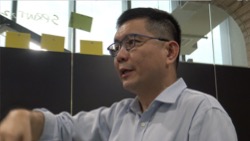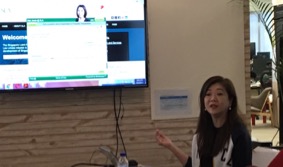
“I am the most un-government person in the world,” says Mr. Chan Cheow Hoe who left a successful career with Citibank and Barclays to become the Government Chief Information Officer (CIO) and Deputy Chief Executive of Singapore’s GovTech. He oversees GovTech Hive, an innovative digital services agency created to develop deep technical capabilities within the public sector in order to meet the increasing demands of citizens and businesses.

It’s tempting to look at where Singapore is today and assume the path has been easy and instant. A transparent conversation with Mr. Chan and his team reveals their colorful journey to create a smart city-nation.
Just a few years ago, Singapore was no different than many municipalities in the US today. Almost everything was outsourced and technology was seen as an enabler via a factory model. In other words, an RFP was written, and the government looked for the lowest bidder.
Mr. Chan set his vision on building capacity within the government using agile development methodology. Not everyone was immediately convinced.
“I started with seven people. We looked at projects that would take $5 million in two years, and instead created them for $100,000 in four months. That’s how I got attention. We started delivering and people started believing it was possible.”
Two and a half years later, Mr. Chan leads a robust and diverse team of 150 people who build agile technologies focused on real-world need that prioritize a positive user experience. Their ranks include technologists from Harvard, MIT and other top-tier institutions. Mr. Chan is a graduate of Wharton Business School. The workplace buzzes with energy and excitement. Upon first glance you would assume it was any modern co-working space or technology company headquarters.
Mr. Chan describes the team’s work as a series of overlapping circles. They started by proving agile was possible, then they layered on data projects, then laid application infrastructure, then added security and geospatial technologies. This takes a diverse group of people from hardcore developers to social scientists to industrial designers.
The teams work as a remote agency that government departments can tap into but also infuse squads directly into the ministries and agencies. This allows them to create capabilities for more specialty areas like edtech in the Ministry of Education. So instead of the self-preservation principles that plague so many government entities, they instead focus on delivering the right product. This mind shift is shifting the way the government works.
“We don’t just deliver products, we create things that help agencies create better government. And we won’t stop here. We are built for change.”
Here are some of the innovative digital and data solutions that were developed by Hive specialists working closely with various government agencies:
- The MyResponder app alerts volunteers trained in first-aid that someone nearby is in cardiac arrest. This life-saving technology provides support to first responder crews with the added benefit of creating a community building activity. It’s been referred to as, “call it crowd sourcing to save lives.” The app was developed by GovTech Singapore’s Government Digital Services unit, in collaboration with the Singapore Civil Defense Force.
- The OneService@SG mobilizes every citizen to improve government agency service delivery. Users take pictures and geo tag areas that need attention, such as lighting malfunctions, sidewalk safety issues, grounds maintenance, which then alerts a network of partner agencies who can quickly address the problem.
- Ask Jamie is a governmental virtual assistant who further bridges the gap between residents and the public sector. Instead of wading through archaic forms brimming with government-speak, the Ask Jamie bot guides users through a chat function. Instant answers save time and resources for everyone, including costly call center agents.

These technologies have several things in common. They create a seamless interaction between the problem owner, the data owner and the problem solver. The user interface makes this look easy, but the reality is that it is a careful coordination between multidisciplinary teams who have to work together to deliver end-to-end solutions for the public good.
GovTech’s Government Digital Services has four teams: product design and development, emerging tech, data science division and the geospatial specialist office. The technology they develop is cutting edge in the areas of data science, user experience design, software engineering, geospatial technology and Internet of Things (IoT), robotics and artificial intelligence (AI). Specific examples of their innovations will be outlined in future posts in this series.
Even with all of this advanced technology, Mr. Chan encourages his team to think creatively – sometimes simple tools are enough to solve the problem when the proper work has been done upfront. These include things like customer segmentation, topic modeling and contextual analysis to understand the pain point and the user perspective. The end goal is unanimous and simple. GovTech provides the platform to gain and deliver insights so that the government can improve their ground sensing abilities to better serve citizens and residents.
Mr. Chan’s philosophy is a call and a challenge to all public sector organizations around the world. He describes a new way to deploy government services stating, “it’s not enough for government to think differently. It requires a commitment to build capability. Technology is more than an enabler. It is a critical capability of any government today.”
Chelsea Collier participated in a tour of Singapore in May 2017 care of GovTech and IMDA Singapore.


